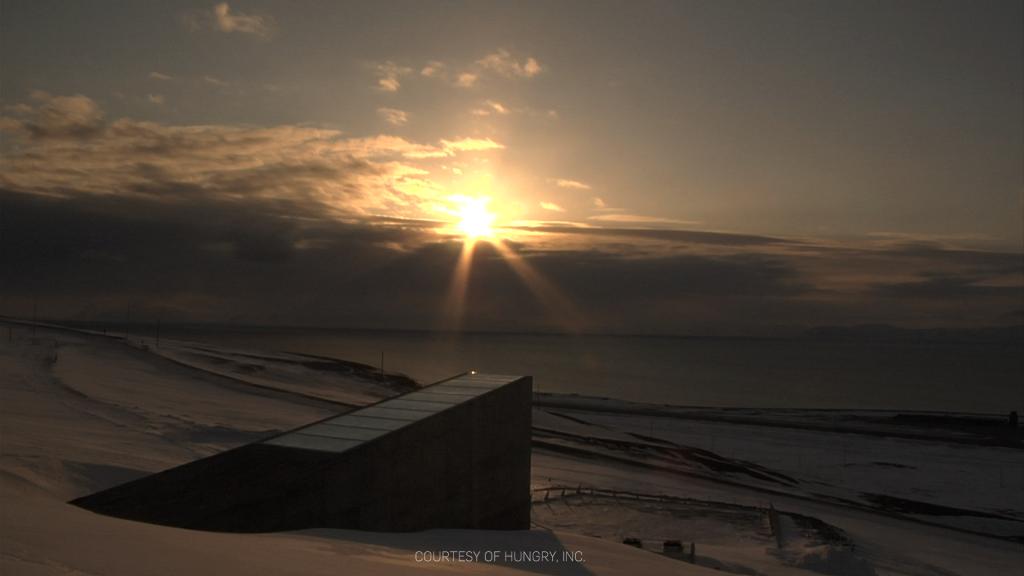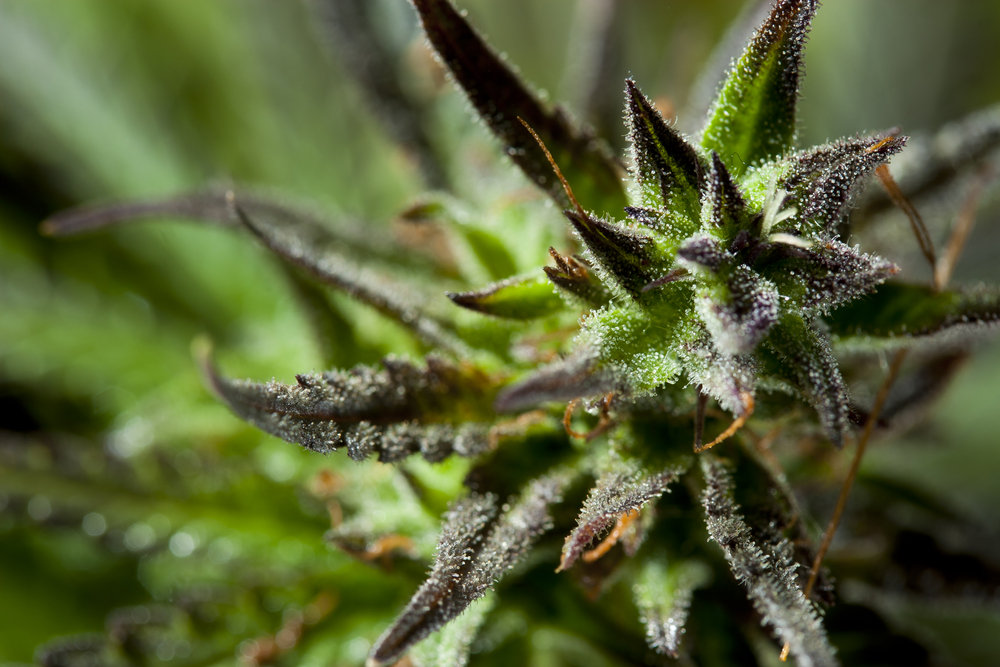The first thing Scott Durkee does when he picks me up at the ferry dock is laugh. “You’re funny,” he says. “You thought you could just hail a cab on Vashon Island, just like that? This isn’t Seattle!”
And indeed, Vashon is not. With its winding rural roads, vegetable stands, and slow-paced island charm, it’s hard to believe that the island of a little more than 10,000 residents is only a 20-minute ferry ride across the Puget Sound from the city.
Durkee’s lived on Vashon since 1990. A self-described “freelance factotum,” he reuses just about everything he can find from his various jobs around the island. He makes garden beds out of old barrels from his job at a nearby winery. He powers all three of his cars with vegetable oil from his gig inspecting grease traps for restaurants. He used to build water systems and wants solar panels to make his rainwater catcher “carbon footprint free.”
Now, he’s got a new venture in mind: growing recreational marijuana in the greenest way possible. Currently Durkee and his partner Joe Yarkin, a farmer, are waiting for approval to get their grower license and start their company, Buds of Vashon.
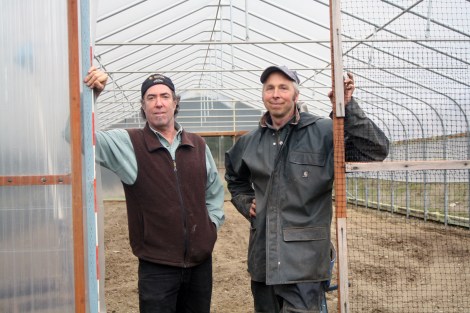
Amber CortesDurkee and Yarkin in front of their greenhouse on Vashon Island.
With a reputation for supporting both dank buds and eco-friendly lifestyles, King County’s Vashon Island could be a test kitchen for how marijuana gets grown elsewhere in the state. The law legalizing recreational marijuana won 73 percent of the vote here (as compared to 55.7 percent in the rest of the state). A movement seeking to preserve Vashon for artisanal, island-grown weed is already jockeying for space with big players like EdiPure, a purveyor of marijuana snacks (think THC-laced candy, chips, etc.) that plans to begin manufacturing in an abandoned K2 ski factory on Vashon.
Against this backdrop, Buds of Vashon hopes to forge a path for raising weed with the lightest carbon footprint possible. The goal is to grow marijuana in a greenhouse using the same organic methods that Sun Island Farms (Yarkin’s farm) uses for their vegetables. One day, they’d like to proudly label their product as “ecologically grown.”
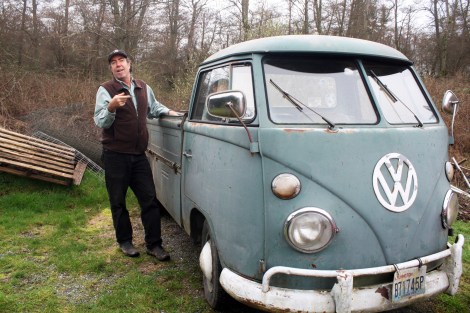
Amber CortesDurkee hopes to haul sustainably grown pot in his 1967 VW (named Gunther) — which he says gets over 40 miles per gallon on used vegetable oil.
That label doesn’t exist yet. Right now things are moving fast for the two states that legalized marijuana in November of 2012. Washington state recently handed out its first producer-processor license with more on the way by June. Colorado just raked in a cool $2 million on taxes for its first month of recreational marijuana sales.
Not to harsh anyone’s mellow here, but are there any regulations in place for the environmental impacts of this now legal agricultural and retail industry? Well, sort of. So far both the implementation of Colorado’s Amendment 64 and Washington state’s I-502 Initiative have rules in place for things like waste disposal and pesticide usage for outdoor farms and greenhouses. But what’s missing is any reference to the carbon footprint for indoor growing, which is actually fairly significant.
Large-scale, indoor marijuana growing (usually in a warehouse) — with its heavy, energy-eating lights, ventilators, dehumidifiers, and massive heating and air-conditioning needs — is an incredibly energy-intensive industry. One of the only studies on indoor cannabis cultivation is Evan Mills’ 2011 study, which accounts for both medical and (estimated) illegal indoor growing. According to this study, indoor cannabis cultivation contributes to yearly greenhouse-gas pollution equal to that of 3 million cars.
Or look at it this way — one joint rolled with indoor, industrial-grade pot represents three pounds of CO2 emissions, the equivalent of driving 3.4** miles in a 22 mpg car (think about that next time you light up and order a pizza). And if legalization continues in other states, there will be a lot more joints smoked, a lot more pizzas ordered, and a lot more indoor marijuana growing factories spewing CO2.
But growing indoors is faster, produces more yields, and has a timing advantage over outdoor and greenhouse cultivation. “Indoor enterprises can yield three or four crops a year, while outdoor farms can only produce one or two,” Joni Balter writes in Bloomberg View. The Pacific Northwest’s rainy weather — and the nature of the late spring rollout — means the more wasteful indoor grows are a better business bet for now. Plus, some say regulations in Washington state favor indoor operations by imposing farm size limits and bans on hoop houses for weed in King County. “Those options don’t meet everyone’s business plans and it certainly excludes artisan growers and ‘mom and pop’ size growers,” says Shango Los, founder of the Vashon Island Marijuana Entrepreneurs Alliance.
For small, organic-grower hopefuls like Buds of Vashon, growing “green” will mean making less money than indoor warehouses. Nevertheless, the buds want to make a go of it, by using their own raised compost, controlling water run-off, and maintaining minimal energy usage.
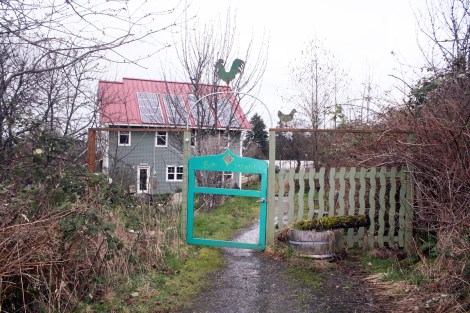
Amber Cortes Joe Yarkin built solar panels on his roof at Sun Island Farms.
At Sun Island Farms, Yarkin, his wife Celina, and a farm intern named Dylan are in the fields planting strawberries. In a former life, Yarkin was a contractor with the National Science Foundation and worked on remote solar engineering projects in Alaska, Greenland, and Antarctica. Now he runs Sun Island Farms, which grows 45 crops and gets a quarter of its energy through four-kilowatt solar panels that Yarkin built on the roof of his home. “I obsess about agriculture,” he jokes, “My mid-life crisis present was a tractor.”
Yarkin doesn’t just obsess about agriculture; he also obsesses about energy usage. While Washington state is known for getting over 80 percent of its power from renewable sources like hydroelectric and wind, additional energy demands on the grid will likely be met with natural gas generation, instead of clean sources. Plus, if Washington is a testing ground for marijuana cultivation, how would an energy-intensive industry translate in coal-powered states? Yarkin has done his own calculations about the impact of this additional load onto the energy grid, and written to county commissioners, zoning officials, the governor’s office, and local newspapers. The one thing he wants to know: Will any of the legislators in Washington and Colorado address the environmental impact of indoor growing?
So far, it doesn’t seem like it.
“Nothing like that has been presented to us yet,” says Daria Serna, the communications director from the Colorado Department of Revenue, which will oversee enforcement of the new marijuana law in Colorado. Really, like, nothing? Not yet. But she said she visited a grow room once and was amazed at the energy usage: “It was about four city blocks’ worth. So I can’t imagine what it will be like with retail.”
Part of the problem, at least for Washington state, is a matter of jurisdiction. According to Brian Smith, communications director for the Washington State Liquor Control Board, the agency does not have the authority to encourage energy-use incentives (that’s something that a utility company could do), nor can it levy taxes for high carbon footprints (that’s up to the state legislature).
The Washington State Liquor Control Board did, however, commission a study of the environmental impacts of marijuana growing by BOTEC Analysis Corporation. It concluded that “the most important environmental cost of marijuana production in the legal Washington market is likely to stem from energy consumption from indoor growing,” adding that the carbon emitted by indoor will be “a non-trivial though small component” (.08 percent) of Washington energy consumption: “significant enough to be worth reducing.”
According to Mills’ study, indoor cannabis production accounts for 1 percent of total U.S. electricity consumption. This might seem small, but it’s the same amount burned by 2 million U.S. homes. “We should be taking away 1 or 2 or 3 percent of what we do, not adding to it,” Yarkin says. Easier said than done in an industry with huge (and fast) revenue potential for states and growers alike.
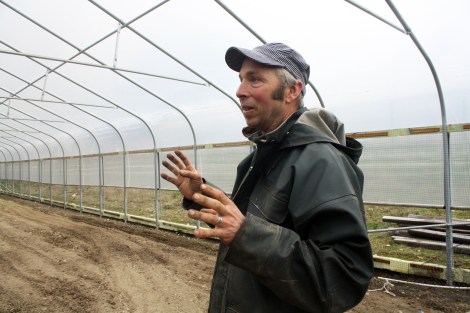
Amber CortesJoe Yarkin in the greenhouse where Buds of Vashon plans to grow.
“Right now what I see is a gold rush,” Yarkin says. “It’s the first person, with the most crop, when the price is going to be the highest. They’re going to make the most money and return on their investment.”
Recreational marijuana is definitely a hot commodity right now — some retailers in Colorado are selling bud for $400 per ounce in Colorado. With prices like that, you can afford to run up a $21,500 a month electricity bill.
But can greenhouse or outdoor growing ever yield the same kind of revenue as a large-scale indoor operation? Yarkin says it’s just a matter of time. When the retail price drops, he predicts, indoor growers will be stuck with outdated systems — and a huge energy bill. But why wait until something is unsustainable to make it sustainable?
Yarkin is still waiting to get a solid answer from all the elected officials he wrote to. He believes it’s time for his home state to make this budding new industry more ecologically friendly. “We’re one of the first adopting states. This could spread across the country, and we should lead the way, and not be an example of how not to do it.”
Correction: An earlier version of this article relied on math from the Mills study for pounds of CO2 per driven mile in a 22 mpg car. As an astute reader pointed out, math from the EIA puts the number of miles driven needed to emit two pounds closer to 2.5 instead of 7.5. Grist regrets the error and has sentenced the author to delivering pizza by bike on April 20.
Correction to the correction: Evan Mills informed us that the carbon cost per joint is conservatively low as is. The final version of the study puts the estimate at three pounds per joint — not two — necessitating yet another tweak in mileage, from 2.5 all the way up to 3.4. Still not good.
